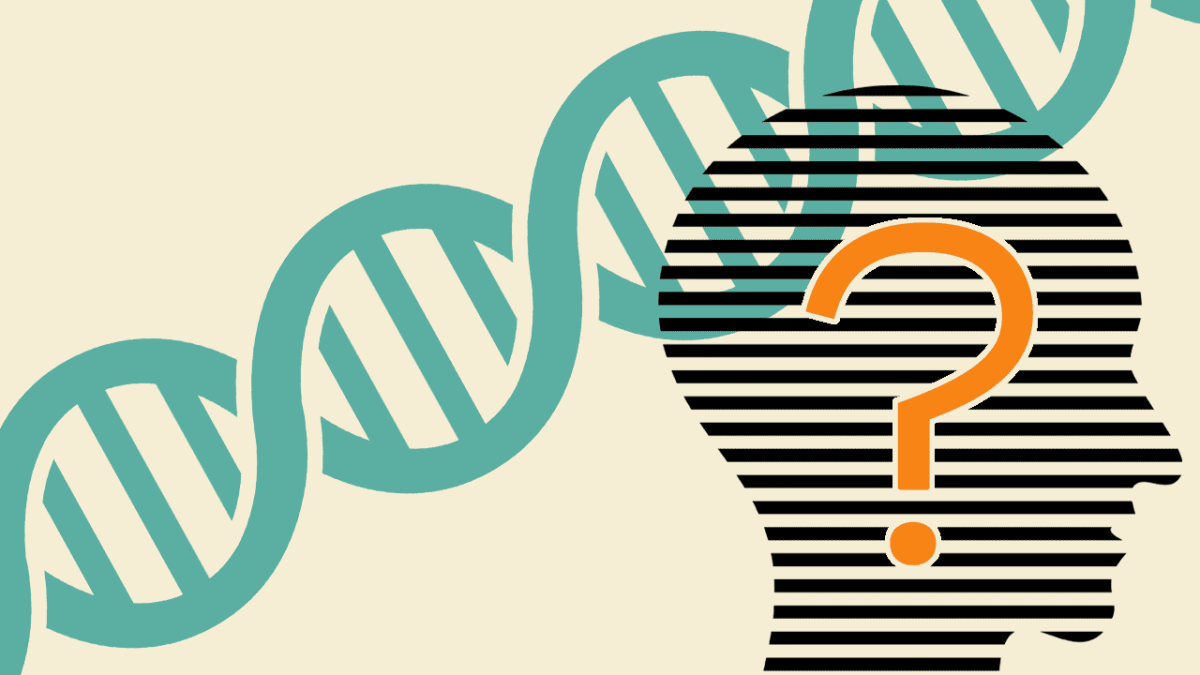For my second guest post, I’m pleased to welcome Rachel King, a professional genealogist based in London, England. Here, Rachel shares some examples demonstrating how she uses segment data in her work.
As a professional genealogist specialising in genetic genealogy, I use DNA Painter considerably in my work. For example, I use the shared cM tool to calculate possible relationships and What are the Odds? to test hypotheses for unknown parentage cases.
I am also an investigative genetic genealogist with the DNA Doe Project and use chromosome mapping to help determine common ancestors and ultimately identify the unknown person. While this is extremely helpful for unknown parentage and unknown person cases, you can also utilise it in your own research.
Unknown DNA Segments
At a basic level, unknown DNA is DNA where you don’t know which of your ancestors it came from. If you are an adoptee and have minimal information about your biological background, all your DNA is unknown!
Even if you know your family history, if you are only just getting into genetic genealogy, your DNA is relatively unknown:
- You know at a basic level that all your DNA came from your parents.
- But you don’t know which specific bits of your DNA came from their parents, their grandparents, and so on into the mists of time.
With unknown person investigations, all their DNA is unknown until we can identify the person.
Let’s start with an easy example directly applicable to someone seeking to understand which of their ancestors a particular segment of DNA comes from.
Unknown DNA: chromosome 9 of Person A
Person A is trying to map his paternal side DNA. Chromosome 9 has matches that cover this entire chromosome with no apparent gaps. Until recently, though, he had identified only a tiny segment as coming from a particular ancestor. Person A’s paternal grandfather came from the US; all his other grandparents were British or Irish. It is therefore unlikely that matches on the paternal grandfather side could also be on one of the other branches.
“DB” recently appeared as a new My Heritage match to Person A. DB shares DNA with Person A’s half-first cousin, ST, who is on Person A’s paternal side. He also shares a large segment of DNA on chromosome 9. Since I know how Person A and ST are related, I now know that these segments of DNA were inherited from Person A’s American grandfather.

A bit of good old-fashioned digging allowed me to identify DB’s family tree and extend it back in time. By doing this, I was able to pinpoint the exact common ancestor he shares with Person A: Person A’s great-grandmother, Eliza Ledgerwood.
Now I have identified those two segments on chromosome 9 as coming from Eliza Ledgerwood, I can use that information to sort the other matches in the same area into paternal (and therefore also sharing an ancestor on the Eliza Ledgerwood branch of Person A’s tree) or maternal-side matches.
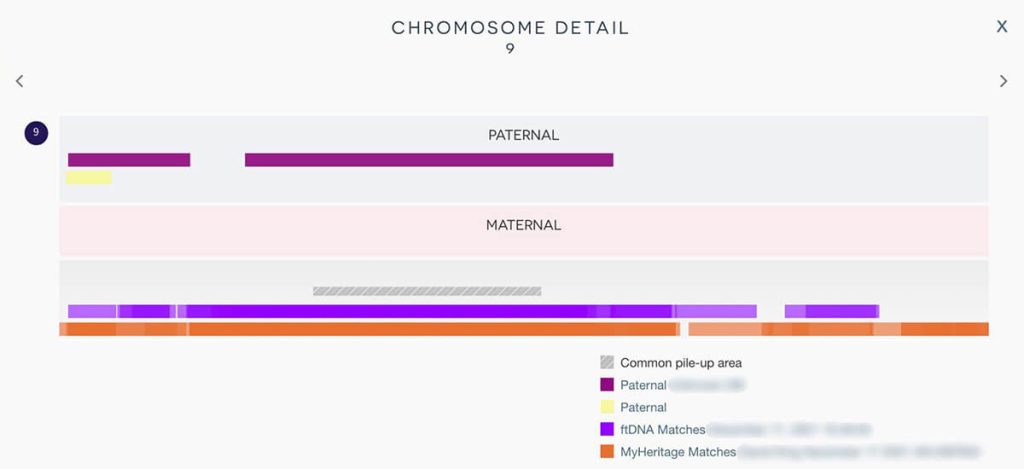
Using segment searches to help figure out brick walls
You can also use segment analysis to try and figure out which DNA segments come from a brick-wall ancestor. For example, Person A descends from Thomas Toll. By doing genealogy, I know Thomas Toll was born on 4 July 1812 in Ohio and died on 11 October 1891 in Iowa. I also know his father was born in Holland and his mother in Virginia. If I can identify DNA segments that came from Thomas Toll, I can use that information to investigate other matches who share DNA in these areas.
I label all segments that I am confident come from his child, John Paul Toll, as ‘Toll/Talbott’ (his parents were Thomas Toll and Sarah Talbott).
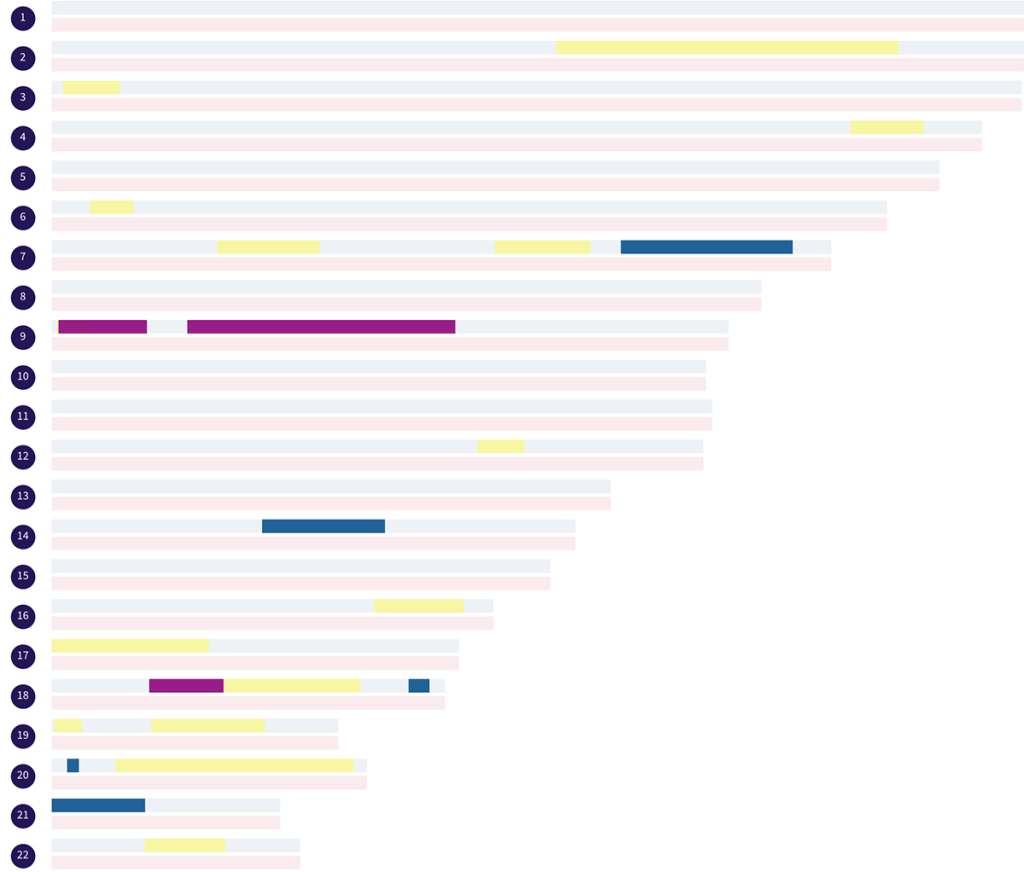
I don’t have an awful lot with which to work. The dark blue segments are definitely from John Paul Toll or Sarah Talbott. The yellow ones are definitely from the American grandfather, but I don’t yet know from which of his ancestors they come. The purple segments came from Eliza Ledgerwood, who married John Paul Toll.
I know Person A has a large number of Talbott side DNA matches, so if I label those matches as Talbott, I can see where they overlap with my definite Toll/Talbott segments:
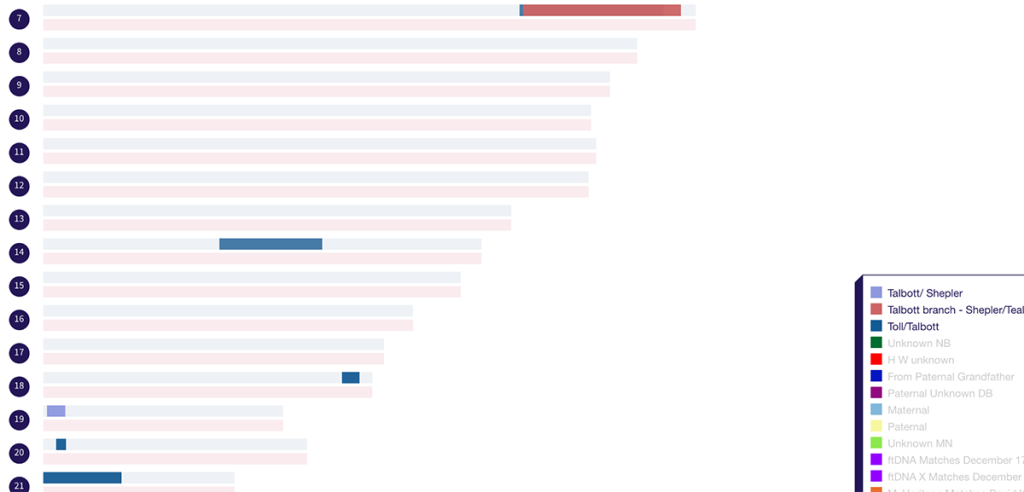
Already I can see that that segment at the top on Chromosome 7 has to be from the Talbott side, not the Toll side, so now I only have the segments on 14, 18 and 21 that I can consider as potentially coming from Thomas Toll, though they could still come from Sarah Talbott.
To try and identify more Toll / Talbott segments, I can contact AncestryDNA matches of Person A that I know descend from Thomas Toll and Sarah Talbott and try to persuade them to upload their DNA to MyHeritage, FamilyTreeDNA or Gedmatch. Otherwise, I must wait for more DNA matches to appear over time or seek Toll/Talbott descendants to test. As I identify more DNA segments as potentially coming from Thomas Toll, I can keep an eye out for new matches that share those particular segments with Person A and maybe identify Thomas Toll’s parents.
Using DNA Painter to help identify an unknown parent or parents
If you have an unknown parent, looking at your DNA segment data in DNA Painter can also help you. It’s beneficial where your biological parents appear to be from the same area, or you are just struggling to divide your DNA matches into two distinct parental sides.
Person B asked me to help him identify his biological father. DNA matches were not particularly close, and it was pretty challenging to distinguish between maternal and paternal as all his matches were from the same geographical area he was born in. When I uploaded Person B’s chromosome data from MyHeritage into DNA Painter, I noticed that two segments were in the same place, and both were matches at the top of Person B’s match list:

Crucially, I had already examined those two matches and knew they did not share DNA with each other. One match must be on the paternal side, the other on the maternal side. I found a common ancestor for one of the matches to Person B’s maternal side, meaning the other match was a paternal side match. I was now able to assign parental sides to those matches:

In a situation where you don’t know which side is which, but you know each represents one parent side, you can label your matches/groups as sides. They will still look like they are on the paternal/maternal side in DNA Painter. Still, it’s a reminder to yourself that what you are looking at is two distinct sides, rather than definitively paternal or maternal. Here’s an example of how this would look in this case:
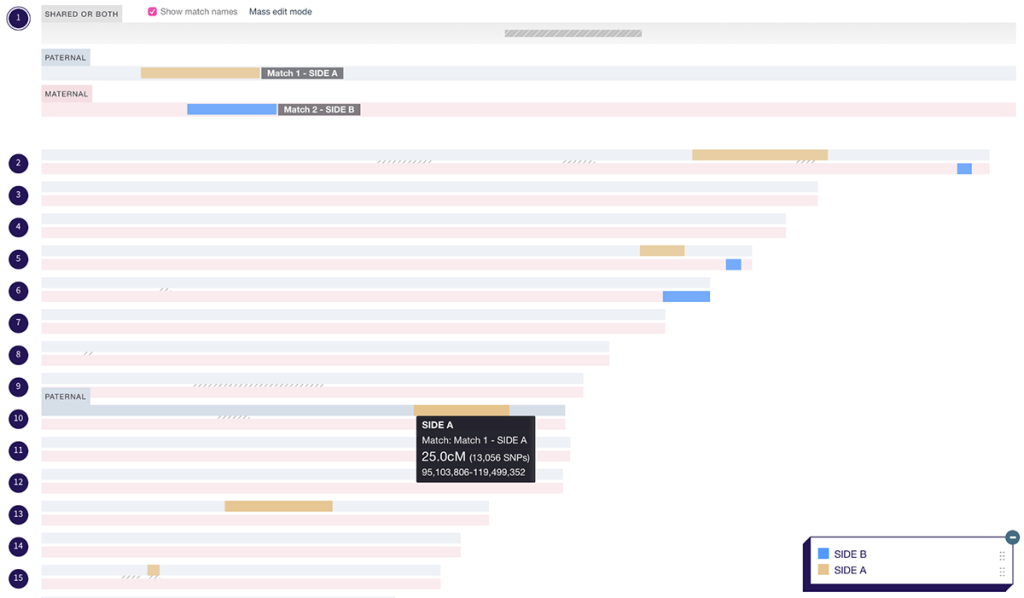
As you can see, the “side A” match shares DNA on other chromosomes. Potentially I can use this information to try and sort more matches on these additional chromosomes into parental sides.
Using DNA Painter to help identify an unknown person
The process I use to help identify unknown persons (Doe cases) is similar to unknown parent cases, albeit there are fewer matches to work with. This is because we can only use two databases, Gedmatch and FamilyTreeDNA, for this work. In addition, the DNA obtained from a Doe can be pretty contaminated, which presents other challenges. All that you know about a Doe is what the medical examiner and other forensic experts could tell from the condition of the remains, any belongings found with the person, and what law enforcement can tell from the scene where the person was found.
Using chromosome mapping to examine DNA segments in a case where there are only distant matches to work with enables us to develop a theory and use that to know where to focus our genealogy research. One Jane Doe case I worked on a few years ago had no matches higher than about 35cM but did have good XDNA matches as well. As the team progressed the genealogy research, it became clear that all the X matches were on one parental side, and a large amount of that X chromosome was represented by various DNA matches.
As we established genetic links with DNA matches, we determined that one parent was either English or her ancestors had emigrated to the US within just a couple of generations. We could label many of Jane Doe’s DNA segments as ‘English’. Although we could not nail down ancestry for the other parental side, we were confident they were of German ancestry. The result was the identification of Anne-Marie (“Annie”) Lehman, who had one English parent and one German-descended parent. You can read more about Annie’s case at https://dnadoeproject.org/case/annie-doe/.
Another technique I often use with unknown person and parentage cases is to try and spot where two different segments on the same chromosome potentially represent one more extended segment from the unknown person’s currently unknown ancestor. Here’s an example based on a current Doe case, but the data here is fictional to illustrate the principle.

In this example, the Blue segment belongs to Match 1, and I have been able to identify a branch of interest in his tree: John Smith and Matilda Jones from Missouri in the 1700s.
The longer green segment belongs to Match 2, and I am confident that the right branch of her tree is Jeremiah Phillips and his wife Rebecca Thomas, from the same town in Missouri as John Smith, living in the 1700s.
Match 1 and Match 2 do not share DNA with each other, and other than having ancestors from the same small Missouri town, there are no apparent common ancestors in their family trees either. I believe my Doe probably descends from these individuals as well. If I’m correct about that, then the Smith/Jones/Phillips/Thomas descendant may have given my Doe one long DNA segment, like this:

I could be wrong about this. That segment could look more like this:

Of course, the Doe’s DNA on this chromosome is all from one immediate ancestor, their parent. The difference between these two possibilities is that I know to look for someone who descends from both John Smith and Matilda Jones AND Jeremiah Phillips and Rebecca Thomas in my first visualisation. If I can find such a person, I can join that blue group and the green group together. In the second example, a Smith & Jones descendant and a Philips & Thomas descendant will connect the two groups somewhere. Still, that connection could be anywhere between my Doe’s parent and the generation beneath Smith/Jones/Phillips/Thomas, and I could spend a very long time trying to find it.
To investigate my theory, I need to try and find matches that share DNA with my Doe in that yellow segment, and preferably, see if they share DNA with either Match 1 or 2:

In the real-life case, I was correct; a child of the first couple married a child of the second couple, and they had children. To apply this to our example: David Smith, the son of John and Matilda, married Jenny Phillips, the daughter of Jeremiah and Rebecca. David and Jenny had a child, Sally Smith. Sally Smith married one William Travers, and they had a son Thomas Travers. Matches in that yellow area descend from the Travers family, and research on other matches suddenly makes perfect sense, and I have a good idea of a much closer ancestor for my Doe:

Let’s say Thomas Travers was born in the mid-1870s. My Doe is estimated to have been born sometime between 1950 and 1980. If Thomas had children between 1895 and 1920, potentially I am only a couple of generations away from my Doe.
Thank you
Hopefully, this has given you an insight into how you can use DNA Painter to work with unknown DNA segments. If you have any questions, please feel free to reach out to me through my website at www.tollgenealogy.com.
Contact info: @dnapainter.bsky.social / jonny@dnapainter.com
